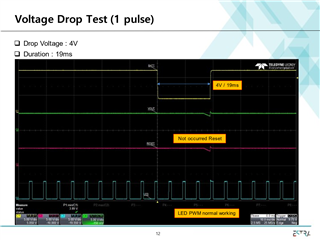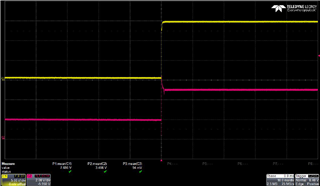Hi,
The customer is applying it to the car temperature control.
If the battery voltage has a rapid drop from 12V to 4V, Vin is less than Vout, so the voltage of Vout decreases after the capacitor attached to Vin is discharged.

It's an expanded situation similar to the above. Yellow (Battery Voltage) / Red (Vout Voltage)

During the course of discharging, a spike is occurring in the regulator's Vout when the battery voltage is normalized again.
(Large than the line regulation value of the datasheet)

As a result of applying various LDO products, this phenomenon occurs in all manufacturers.
Please provide data or explanation to explain to the customer what mechanism this phenomenon is due to in LDO & that there is no problem if the duration of the spike is less than a few time.
Schematic : 5V/50mA


